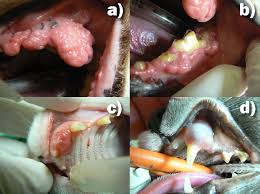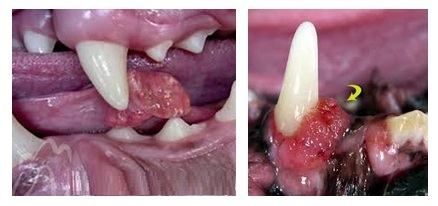Everything You Need To Know About Oral Tumors in Pets

It has been researched and found out that oral tumors in dogs account for 6% of neoplasia, while it is 10% in cats. These oral tumors are caused due to oral cavity and covers a wide range of cancers, including lips, tonsils, tongue, bones, gum and cartilage of the upper and lower jaws along with the structural components holding the teeth in place. The most common oral tumors found in dogs encompass: melanoma, squamous cell carcinoma and fibrosarcoma. In cats, the most prevalent tumor is squamous cell carcinoma.
For treating the pet properly, it is imperative to detect oral tumors in dogs and cats pretty early. Please note that most of the oral tumors in dogs are benign by nature. Even the most lethal canine oral melanoma shows variability in its likelihood to manifest.
Know About Oral Tumors in Dogs and Cats
Most of the dogs can survive for approximately three years with small, well-differentiated melanomas (less than 1 cm) without any need for radiation, immunotherapy or chemotherapy. Even if there is an existence of larger melanomas, immunotherapy aids in decreasing the chance of death through metastasis. It has also been found that most of the oral cancers in felines are malignant, certain cats with oral squamous cell carcinoma can be cured through surgery which is contingent on the tumor size and location.
It is important to know that benign tumors do not spread to other parts of the body. It also grows more slowly than malignant tumors. Malignant tumors attack the tissues adjoining to the tumor and spreads to other parts of the body. There are times when even an aggressive treatment might not be enough to save the pet.

In order to recognize oral tumors in dogs and cats, you need to check the visual appearance of an oral growth, including the contour of the tumor, its size and location and its surface color and texture. If the diagnosis confirms oral tumor, a biopsy might be required. But all oral growths need to be investigated properly.
How To Treat Oral Tumors in Canine and Feline
The biopsy may be incisional (wherein a part of the tumor is taken out for examination) or excisional (surgery to remove the tumor completely). The biopsied tissue is sent for examination to the pathologist. If it is found that there is an abnormality of one of the lymph nodes in the neck, a biopsy or needle aspiration of the abnormal lymph node might be suggested.

Most of the time, if the pet is suffering from oral tumors, irrespective of whether it is benign or malignant, a surgical removal offers the best chance to cure. The surgery might be conducted to remove a part or all of a jaw, including bone and teeth for example. Dogs are able to tolerate radical surgical very well, but cats require more time to recover than dogs.
Veterinary Tips For Treating Oral Tumors in Pets
Since, there are different types of oral tumors that can happen in dogs and cats, each has a different prognosis, management and treatment. Hence, a veterinary dental specialist or oncologist might be recommended. Your regular veterinarian would take the biopsy, and then refer the case to a specialist.
Precautions for Oral Tumors in Dogs and Cats
So, as a pet owner the best thing that you can do, is to detect the disease early on. Brush the teeth of your fur baby through Pet Dent Toothbrush and Pet Dent Toothpaste on a daily basis. If you are not able to brush your dog or cat on a daily basis, do a weekly oral inspection on top of the regular examination by your veterinarian. If you observe swelling in the mouth of your pet, immediately seek the advice of your veterinarian or a veterinary dentist without any delay.

